Ecovacs is one of the first manufacturers to solve the problem of intelligent obstacle avoidance, and it has started to strive for the goal of “all-round robot” in the past year. If DEEBOT X1 OMNI, the first robot to automatically collect dust and mop, is a milestone in the floor sweeping machine, then AIRBOT Z1, which was launched in March this year, is Ecovacs attempt to make a real home robot.
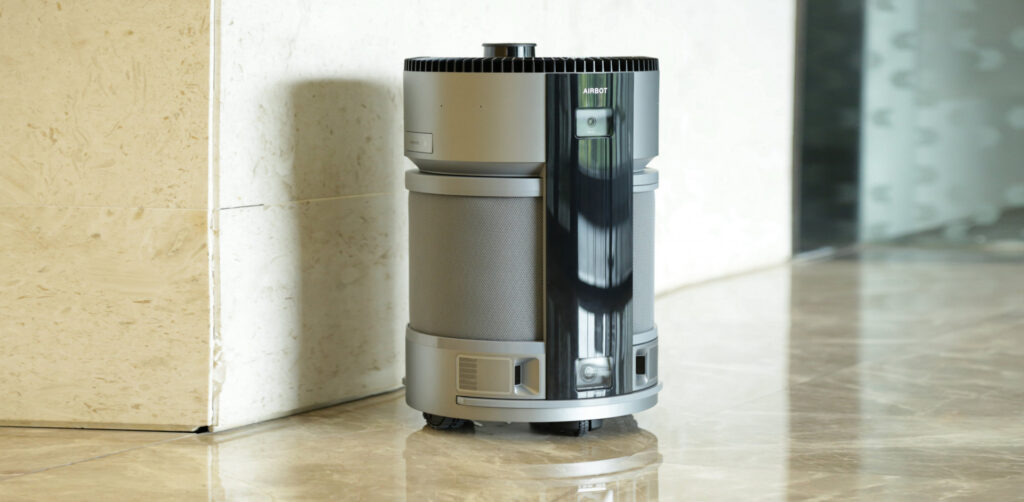
AIRBOT Z1 is a truly “new species”. This means that Ecovacs steps into the realm of robotics that is closer to public perception. Here, Ecovacs is completely in the lead because this is the unexplored compound category, which has a long name – the first all-purpose mobile air cleaning robot that combines intelligent voice and AI video butler.
What is a robot? What makes a robot?
International Federation of Robotics (IFR) preliminary definition of service robot is: a semi-autonomous or fully autonomous work robot, it can complete service work beneficial to human beings.
Robotics is a broad concept that includes military, industrial, commercial and consumer robots. Home robots, on the other hand, have higher technology integration barriers and requirements because they are versatile and cater to users of all ages.
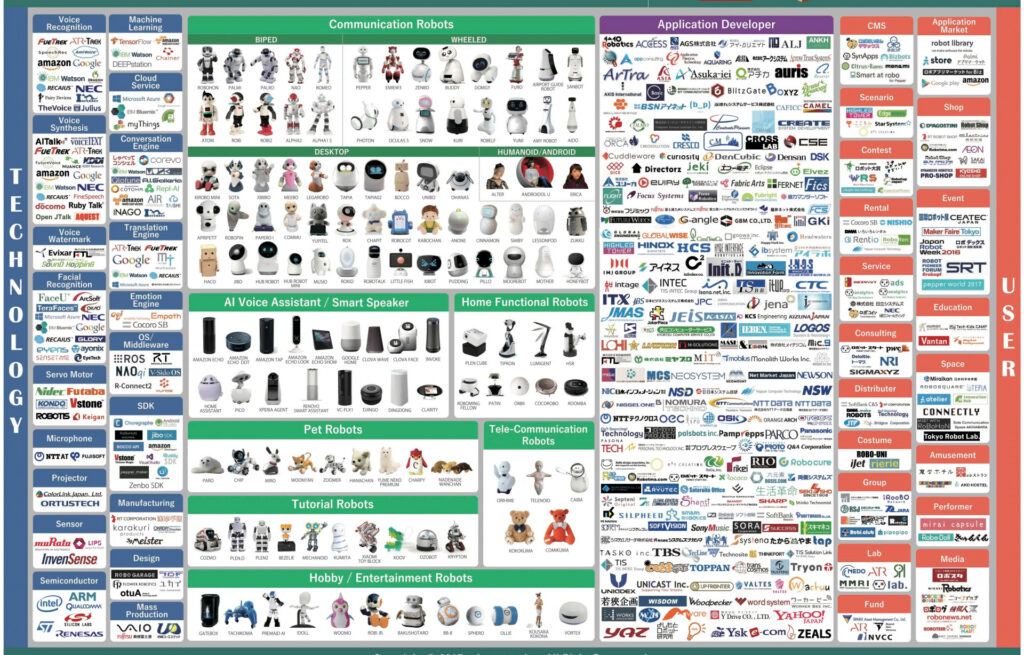
Robotstart, the authoritative directory of robots in Japan, has done the inventory and atlas of robot categories. Simply speaking, home service robots are special robots designed to replace human beings to complete family work. They may include mobile devices, environment aware transceiver devices, executive devices to operate the home environment, and I/O devices to interact with users.
The home service robots we’re most familiar with are actually the most sophisticated sweeping and window cleaning robots, along with weeding robots, cooking robots, and even folding laundry robots, among other unheard of categories.
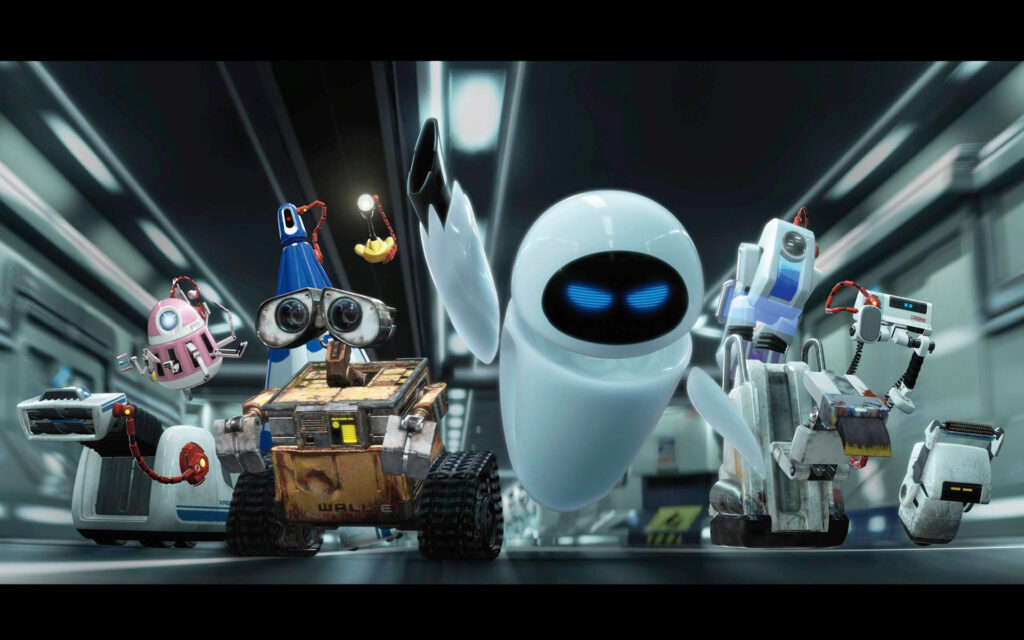
But that definition is too broad and far from what a user might think of as a robot. The robot in the public mind, even if it is not like Doraemon or Terminator with real thinking and humanoid form of AI, but should has a number of universal functions. The final form of home service robot should be able to cover cleaning, home entertainment, home appliance control and linkage, anti-theft monitoring, safety inspection, goods handling, even home care and other work.
Why is AIRBOT Z1 a robot?
What makes the Z1 a new species, closer to the “robot” in the public consciousness, is that it already has the initiative, connectivity and sense of life that robots need, all of which previous products could not provide?The sense of life, in the final analysis, is the user experience brought by intelligence and interaction ability.
The commonalities of robots, or the technical and functional thresholds that need to be overcome in order to become a robot in public perception, include:
(1) Mobility, no matter what kind of mobility, bipedal, quadruped mimicry, or wheeled, robots need to move safely in the home environment;
(2) Environment perception, including machine vision, indoor positioning, navigation, obstacle avoidance and other functions;
(3) Human-computer interaction, from the low level of mechanics and touch, to the high level of speech, and even emotional interaction, the goal is to allow users to interact naturally and easily. It covers automatic speech recognition (ASR), natural language processing (NLP) and instruction conversion execution and so on.
Because it is a “new species”, Z1 experience is mainly evaluated around several core capabilities of the robot.
Robot mobility: stability and safety
No matter how it is implemented, the robot’s ability to move and the aforementioned ability to perceive are complementary. At present, mobility allows robots to better explore the home environment and perform tasks such as sweeping or cleaning the air. In the future, robots will need to help users carry remote controls, tea cups in the kitchen, and gadgets left in the corner to their side.
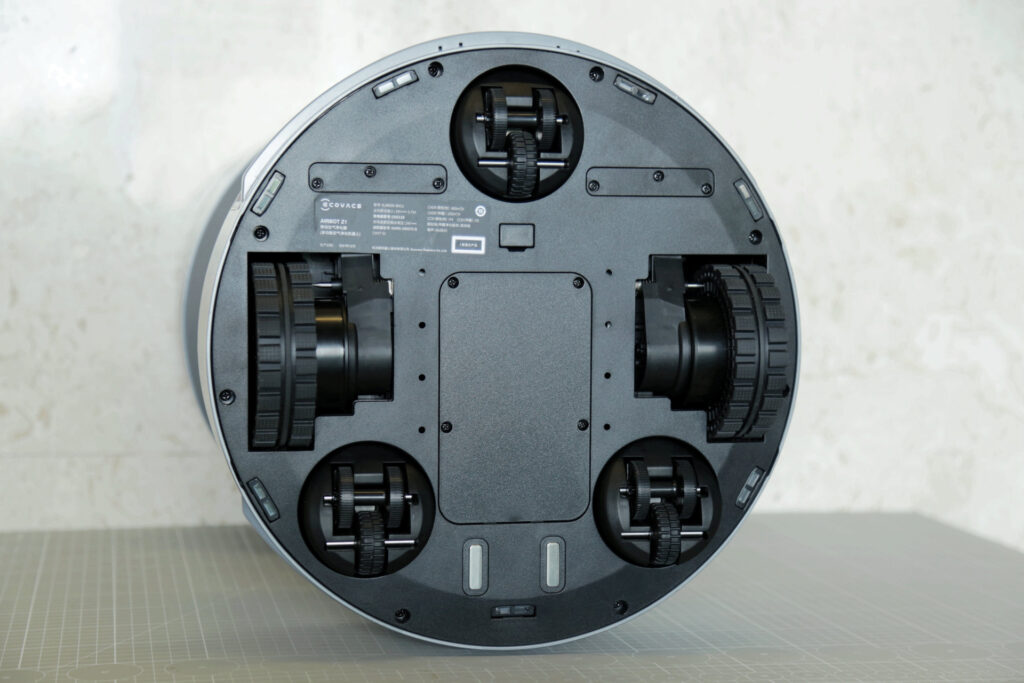
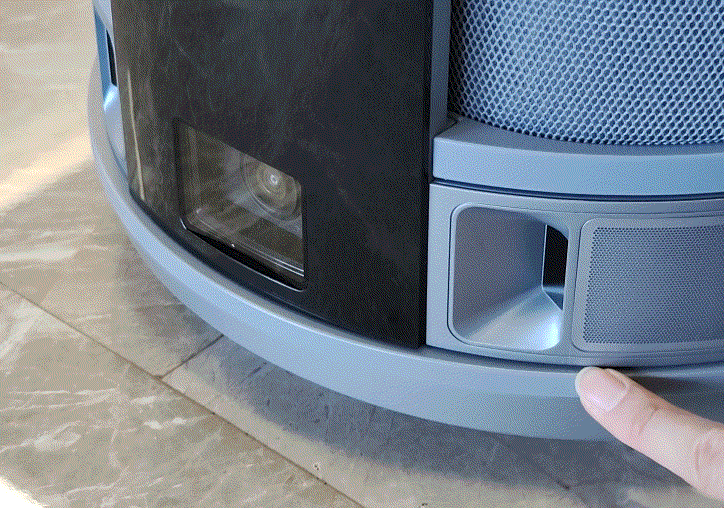
The whole mobile system of AIRBOT Z1 is derived from the sweeping robot of Ecovacs, but it has a direct drive mute driving wheel with larger bearing capacity. The guiding wheel is not only increased to 3 sets, but also has auxiliary wheels, so as to increase the ability to surmount obstacles and safety. The front and back of the fuselage, and 3/4 of the surrounding area of the fuselage are covered by cushioning anti-collision plates, and the anti-drop sensor configuration at the bottom is also higher than normal value.
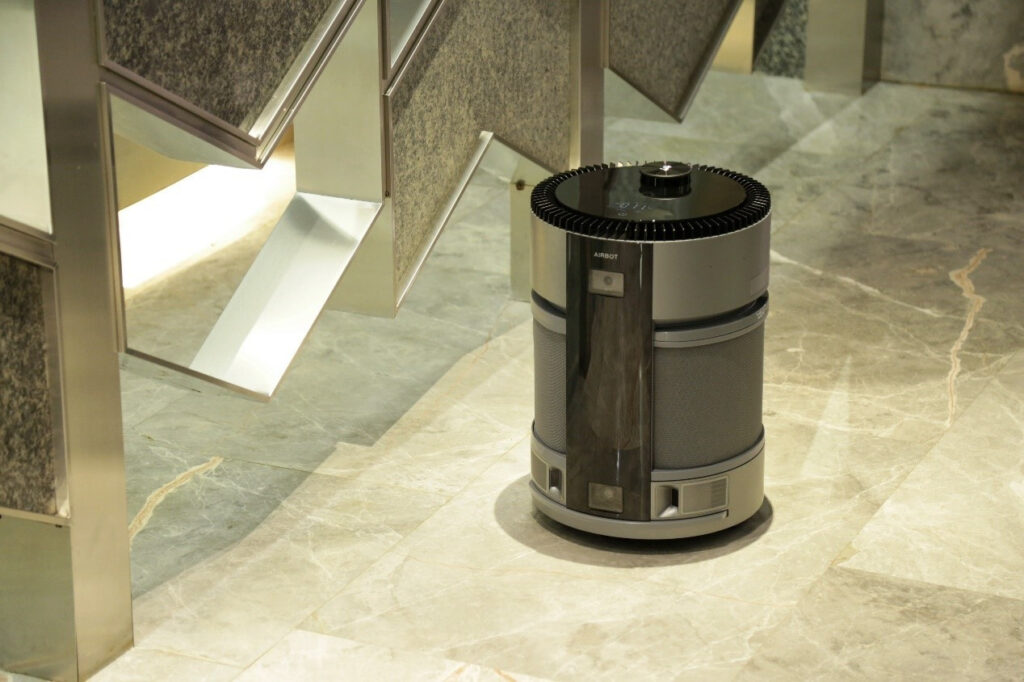
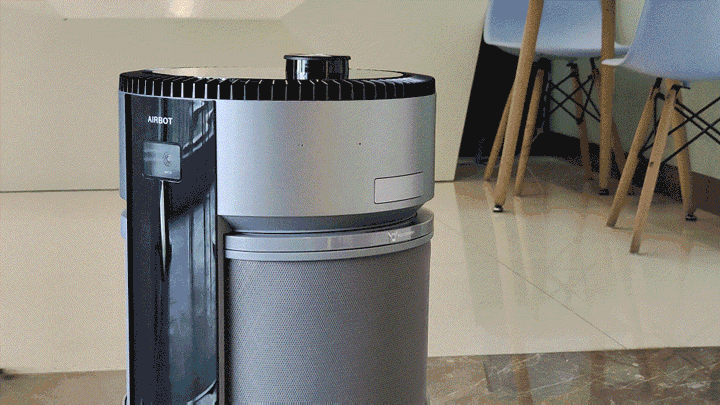
The actual moving speed of AIRBOT Z1 is close to that of the sweeper, and the minimum working noise of the machine is 20dB. In the dead of night, there is only a slight sound, which can let you know, but you will not care about it.
Although AIRBOT Z1 is very “tall”, but its center of gravity is tilted down, plus the self-weight and the support of the bottom wheel, it will have a similar hand feeling when Z1 is pushed up. Even if the cat or dog is not afraid of being overturned, and Z1 can even carry the them everywhere. Ecovacs also provides a drive wheel lock function that keeps Z1 in place when needed, while ensuring safety at the same time.
Intelligent environment perception achieves excellent navigation and obstacle avoidance
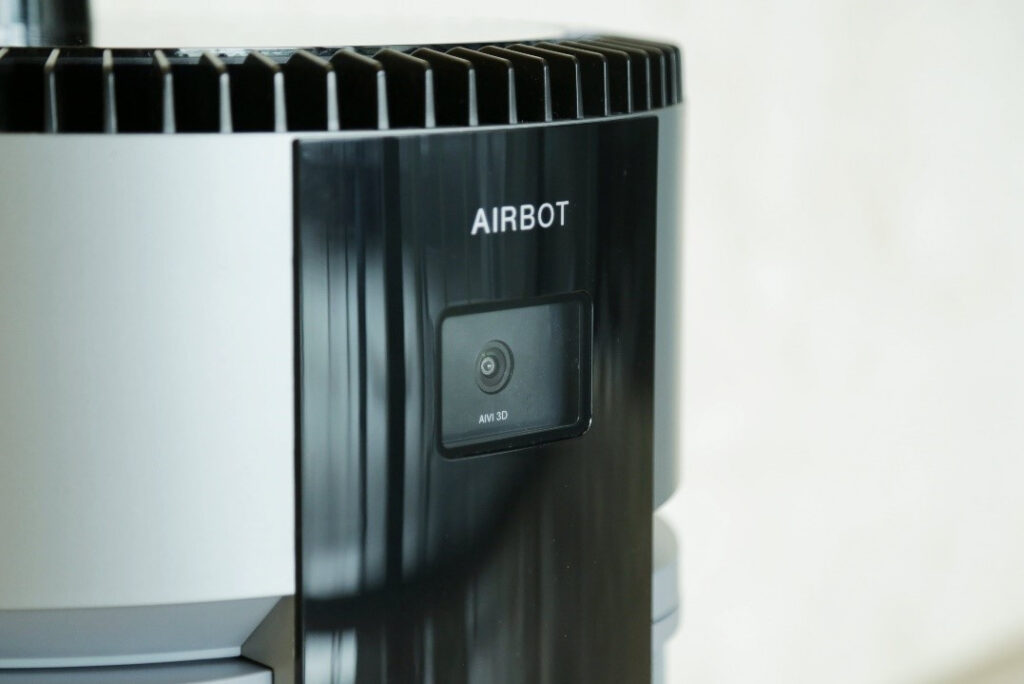
In the family scene, the most basic requirement of environment perception is obstacle avoidance, followed by movement route planning. According to these two foundations, we can finally talk about the future anti-theft monitoring, security inspection, home care and other family services.
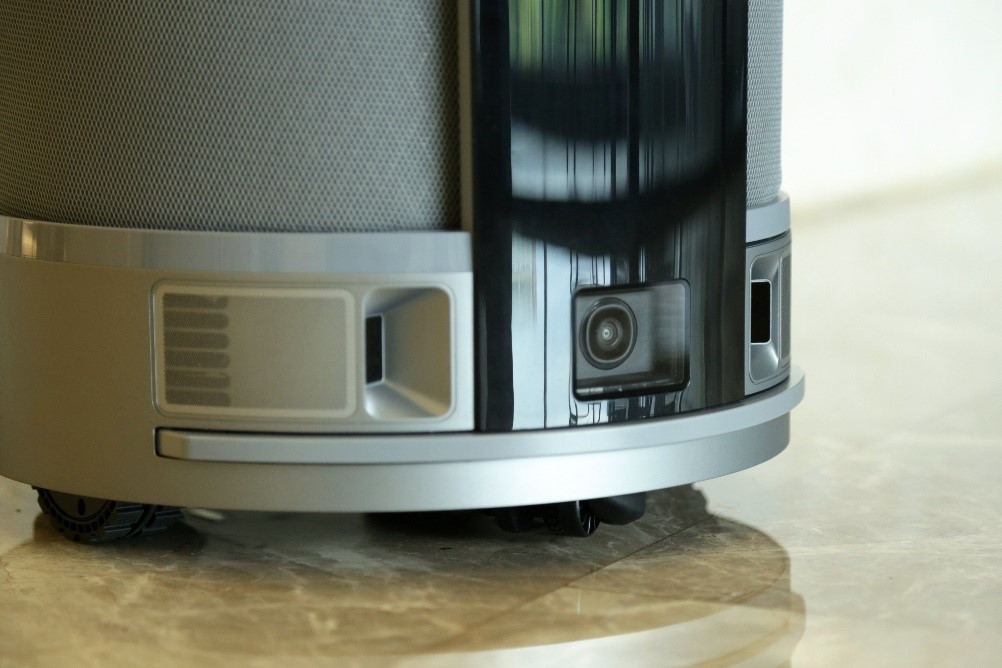
AIRBOT Z1 has the same environment sensing system as DEEBOT X1, the same Horizon Robotics Sunrise 3 AI chip, RGB camera, dToF, and vision + depth information. However, AIRBOT Z1 has an unprecedented “height” advantage of 50cm in the top dToF module due to its size, which covers a larger range of distance perception. Its front AIVI recognition sensor also gets a higher and farther perspective, making AIRBOT Z1 the robot with the best obstacle avoidance effect in the history of Ecovacs.
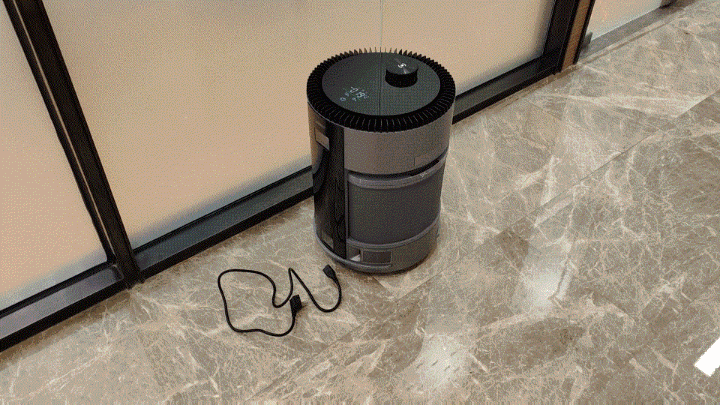
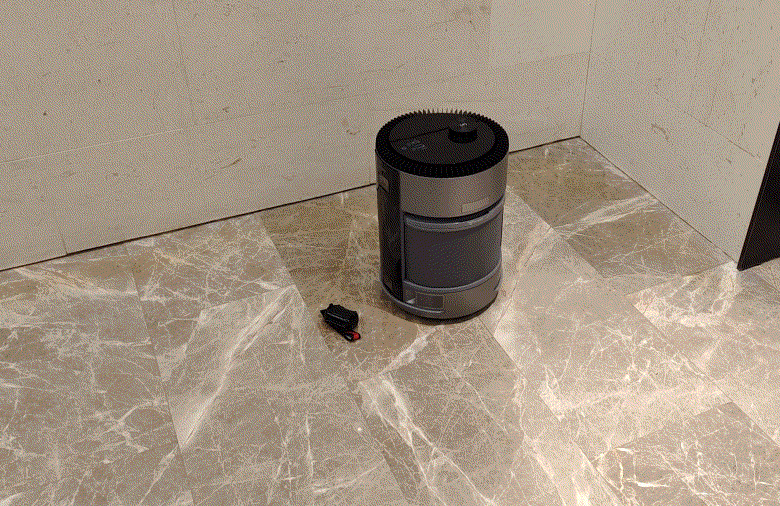
AIRBOT Z1 also has TrueMapping 2.0 global planning, with better SLAM algorithms and diagram building logic. The sensor has a closed design and uses a longer wavelength modulated optical signal with a signal amplifier. The immediate effect is better resistance to interference from outside light sources and better recognition of dark furniture. The officially declared starlight 960P camera provides basic visual recognition image data for low-light scenes.
The obstacle avoidance setting of AIRBOT Z1 is more conservative than that of the sweeper, perhaps because it has 4 times the object detection accuracy of LDS or considering its own weight. “Tall” tables and chairs are easy to avoid, and small plants, toys and rags on the floor can be avoided too. Ecovacs even claims that pets obstacle avoidance can be tested after OTA.
Of course, since there’s no suction from the fan underneath, any small objects that are successfully avoided won’t get sucked into the Z1.
Natural language interaction: understood and done
Human-computer interaction is an important indicator to determine whether a device belongs to a robot, and it is also the core attempt and selling point of AIRBOT Z1. The earliest home appliances are buttons and remote controls. In the Smart Home era, sweeper and air cleaning are triggered by smart speakers or mobile phones. However, AIRBOT Z1 integrates YIKO voice assistant itself.
The speed with which smart speakers have emerged shows just how important voice interaction is. Apple’s Siri was released in 2011, Amazon just launched its first smart speaker Echo in 2014, and Ding Dong in China only appeared in 2015, while Xiao Ai and Tmall Genie were released in 2017. But smart speakers became an important subcategory of home robots as early as in 2017 with their huge potential.
Ecovacs’s ambitions can be seen clearly in the voice assistant they built on their own. Instead of using existing Siri, Xiao Ai, Tmall Genie or any other voice assistant, Ecovacs built YIKO on their own, which also has legitimate music and audio content, weather, news, opera and other common smart speaker functions.
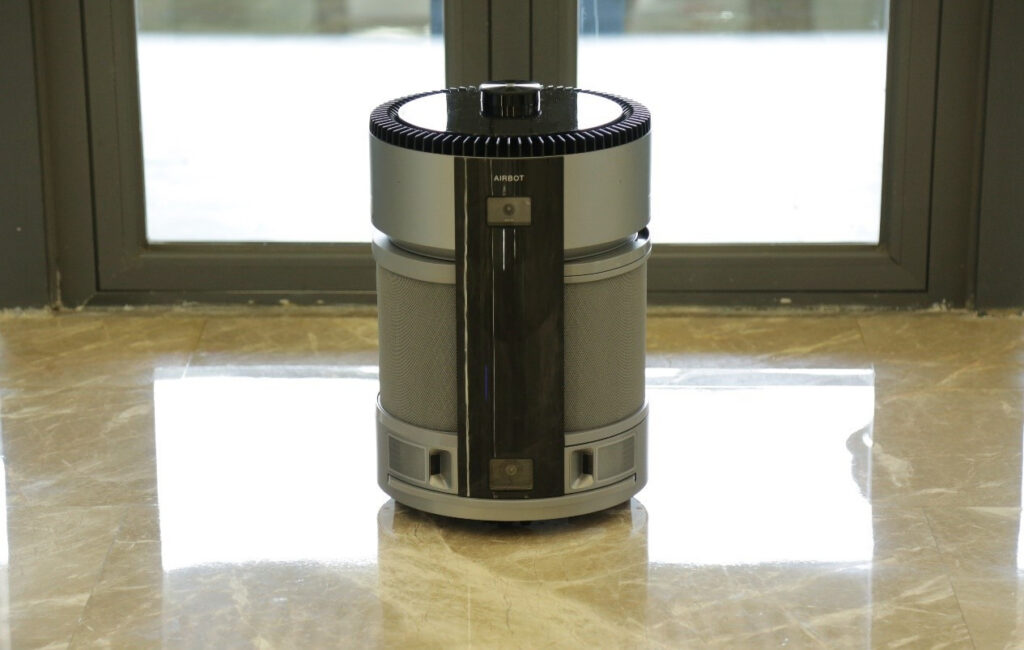
The seemingly simple function of smart speaker is not easy to put on AIRBOT Z1, which can move and is the sound source itself. Moving causes the relative direction of the sound to change, and the proximity of the microphone to the source tests speech recognition and noise reduction algorithms.
The solution is a visual camera with a 6 microphone array (in pairs, front 4 and back 2) for human recognition and sound source location. Z1 will adjust the direction according to the user’s voice, and with the completed environment perception and map established in advance, it can run to the user’s side when the user calls, achieving the effect of “go where the voice comes from”, compound the initiative and sense of life that could not be achieved by previous products.
This unique sense of life belonging to the robot will be more obvious in AIRBOT Z1 mobile purification. You can interrupt it and Z1 will immediately respond to your voice, really listen and respond to you like a person.
The only comical thing is that the real person’s voice is a single point, but AIRBOT Z1 is stereo. With a dual 7W and a larger body, Z1’s stereo sound is far more pronounced than that of a normal smart speaker (especially when it turns to the user’s voice). As it plays music and moves around purging, it’s really like a thousand dollar stereo strolling around your neighborhood.
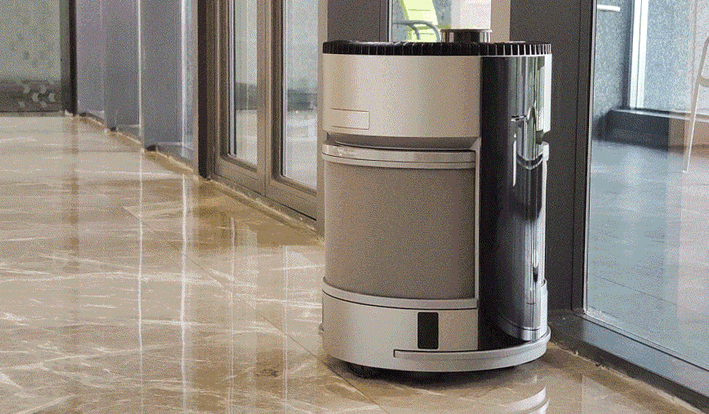
AIRBOT Z1 can complete automatic speech recognition (ASR) and natural language processing (NLP) by himself, and convert users’ oral speaking into operational instructions. He can use the single-layer instructions like “What is the room temperature”, “increase the humidity”, “start cleaning” to query or trigger work, or he can superimpose areas by using multi-layer instructions such as “check the air quality in the kitchen and go to the room to clean”, just like communicating with people.
Air management: super power and efficiency
The default requirement for robots is versatility and universality. But at this stage, even the multi-axis arms of industrial robots and the robotic dogs of Boston Dynamics are not capable of mimicking the multifunctional bionics of human hands.
Then you have to think about, what is the underlying value of the robot? This question should be answered from the user demand side, not the product supply side. AIRBOT Z1 provides a scheme based on AIRBOT series of air purification. Through functional design, it committed to increase the user needs of home function.
In terms of product definition, the air purifier has had three iterations, with new requirements constantly put forward for the purifier module: from the haze of 2014 or 2015 at the beginning, to the formaldehyde of decoration in a few years ago, and then to AIRBOT Z1’s removal of allergens such as pollen, cat and dog hair.
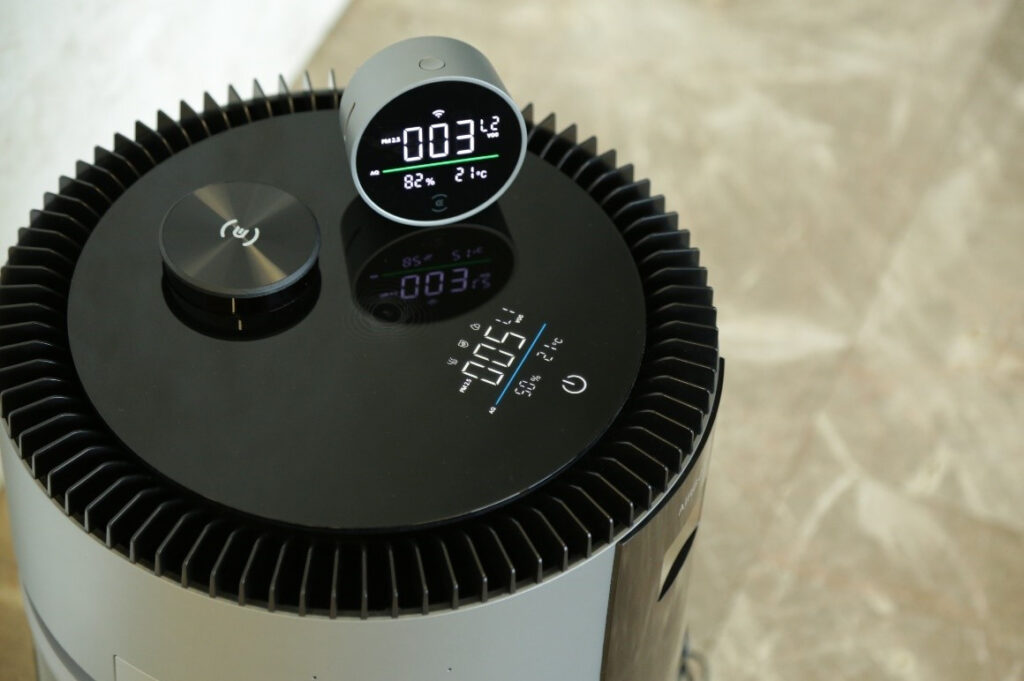
For cats and dogs that are easy to shed “allergens”, kitchen with serious lampblack and living room with concentrated smoke smell, the single point purification of air purifier on the market is effective, but the efficiency is not high, and the effect is slow, also it can not deal with the corner. AIRBOT Z1 can break the limitation at one time by moving ability: 5 times as much as the normal type, covering the purification capacity of 200 square meters villa, more accurate area purification, higher purification speed and efficiency.
And the basic air purification function, in the final analysis is actually pile material. The central part of Z1 is H13 HEPA filter, which can remove 98.87% formaldehyde, 99.97% particulate matter and 99.9% bacteria. Its formaldehyde removing module is the fifth generation of polymer polyamine technology after adsorption.
The CADR values of particulate matter and formaldehyde are 600 and 300m³/h, respectively. The numerical values can reach 643.3 and 310.6m³/h without humidifying components. AIRBOT Z1 is also the first mobile aldehyde removal certification product, which reaches the level of F4 of CCM formaldehyde (measured 1500-2000mg) and the level of P4 of CCM particulate matter, two times higher than the national standard (particulate matter purification efficiency grade II level 2, measured > 32280mg).
Omnipotent service: all functions that you can image and can’t image
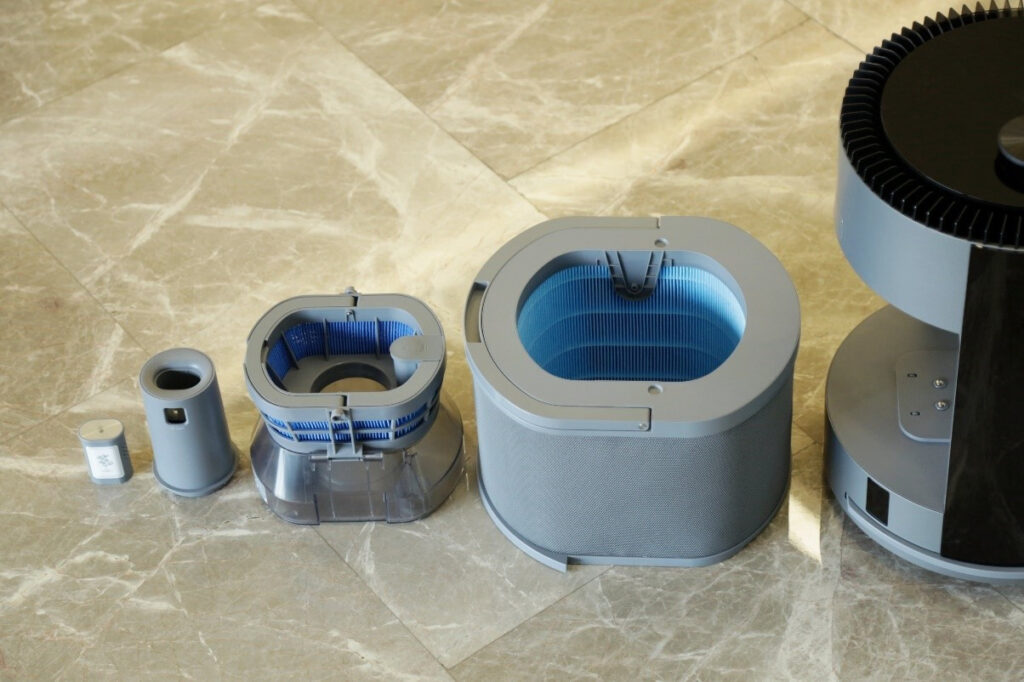
Up to this point, Z1 is only performing air cleaning functions. However, when the filter element is pulled out, you will find that Z1 has layers of heart like an onion. The outermost air filter element, the inner layer of no fog humidification module, the middle with UV sterilization module, the center is also covered with a aromatherapy module without wasting of any space:
(1) The inner layer evaporative humidifier has no fog, no water damage, no water source, and the three-party test shows that the humidification amount of strong gear is 402 ml/h;
(2) The central part of the UV sterilization module, is 3 ultraviolet LED “lamp post”, which is responsible for the secondary sterilization of the internal filter;
(3) At the heart of Z1, Ecovacs also added his own unique aromatherapy module, which is probably the most high-tech one. The aromatherapy effect is also more pronounced this time, thanks to the free air flow and higher fuselage. It still uses the “wild blue bell” sweet atmosphere capsule, but now upgrades into electronic control capsule with a touch below, which can be used to set fragrance level.
Protect your home, and also your privacy
In addition to air-related functions, AIRBOT Z1 also has a privacy-conscious video butler and intercom function. Mobile and intelligent obstacle avoidance make the camera can not only turn the angle, and even voice control Z1 to run where you want. “Did I turn off the oven? Do the dogs and cats have a good meal?” Anytime, anywhere, you can look directly at it, which is the athletic ability that smart camera companies dream of.
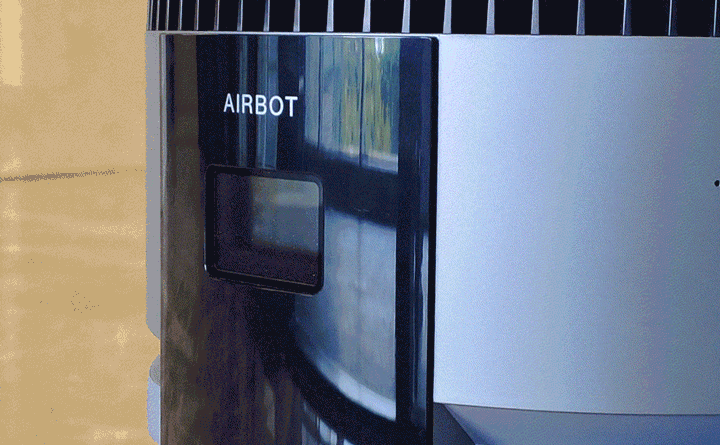
In addition, Ecovacs also pays more attention to user privacy protection than normal manufacturers. AIRBOT Z1 is one of the few intelligent products with TUV privacy certification. In addition to the working indicator light of the camera, it also specially adds the automatic lifting physical baffle, which can directly judge the working status of the camera through the indicator light and baffle.
A future in which every family has a robot
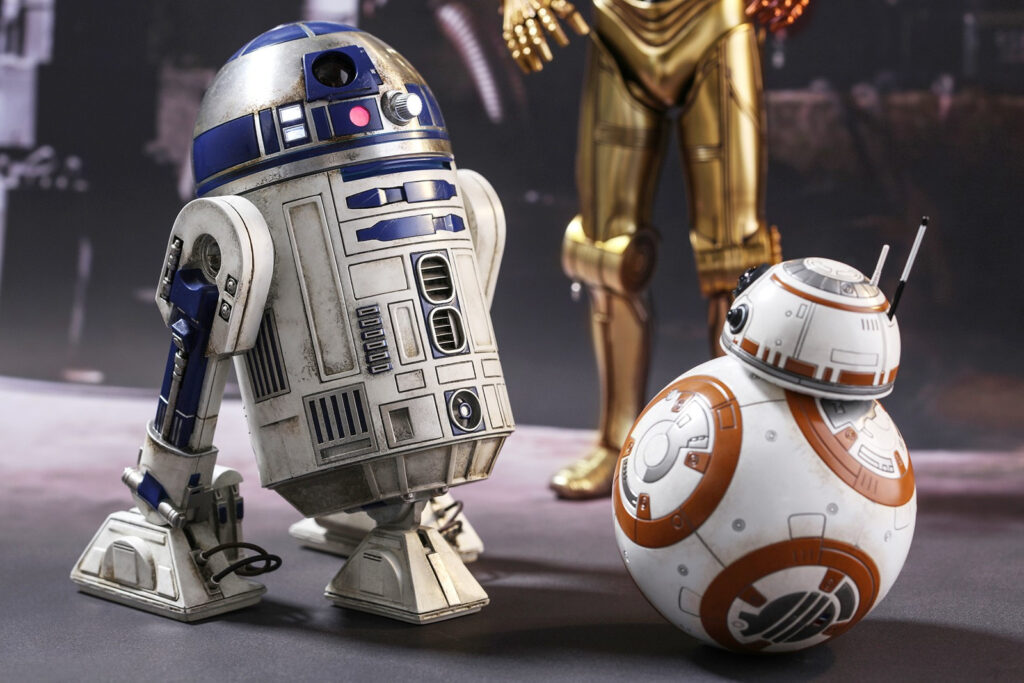
Robots at this stage have neither the need nor the ability to take on a human form, while being barrel-shaped or even spherical like BB8 and R2D2 in Star Wars is not a problem. But from the height and form, air cleaning robot is closer to everyone’s understanding of robots than sweeper. It is like: no matter how versatile and intelligent a mobile phone is, it’s still hard to believe that a piece of “glass” held in one’s hand is a robot.
Just like before, a lot of early education machines wanted to become robot but can not, while intelligent sound had become a robot. It is natural for Ecovacs to become a robot company by standing on the demand side of users.
Ecovacs triggers a chemical reaction with YIKO by its strengths of mechanical control, intelligent obstacle avoidance and planning function. The settings of voice control, direction adjustment according to user’s voice and natural language multi-layer instruction, let the robot have the initiative and sense of life. Superadded with several composite functions such as purification, humidification, aromatherapy, AIRBOT Z1 step out a big stage to the real robot.